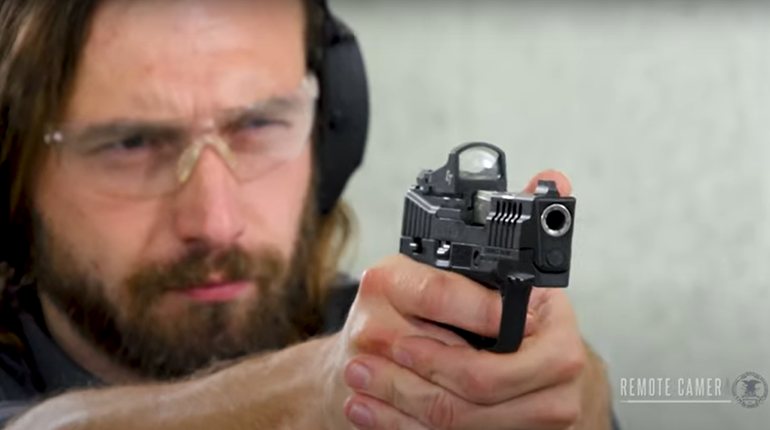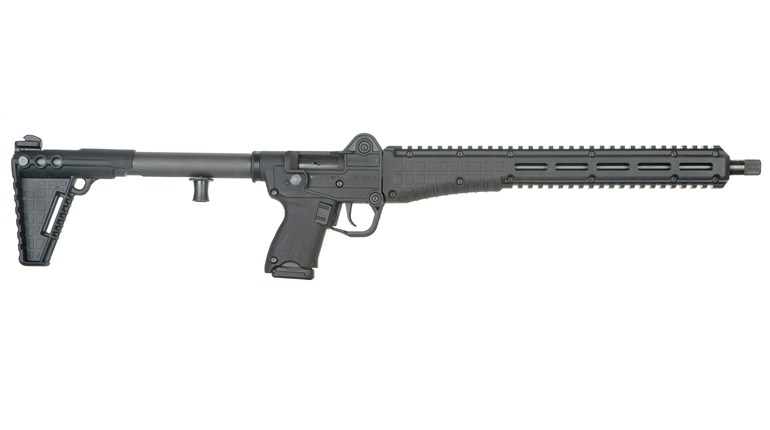
If you are the slightest into old-school 9 mm pistols, then Brownells has just the thing for you: its Regent BR9 produced by TISAS.
It is commonly held that the Browning P35, or Hi Power, was the last of John Moses Browning’s designs. Actually, the pistol he was making (it was still in prototype form when he died) was quite different. He envisioned a full-size, increased-capacity 9 mm that held 17 rounds in a magazine, and had a removable breechblock in the rear of the slide.
After he died, it was up to Dieudonne Saive, a top-rate designer himself, who had been working with Browning at FN in Liege, to finish the new pistol. He then fine-tuned it for the French Army trials. The French wanted something just a bit smaller, lighter and more compact. They also didn’t feel the need for it to hold so much ammo.
Saive’s efforts there produced what we now know as the Hi Power, which FN began selling in 1935. (The French decided to go down another path and went with a French design that could be made in France.)
World War II interrupted (as wars do) and it wasn’t until after the war that FN could get back into production on its own terms.
After World War II, FN essentially armed the free world outside of the United States. Many militaries around the world adopted the FN FAL, and since they had FN bringing them rifles, they might as well have FN bring pistols. Consequently, much of the world saw FALs and P35s as common firearms. So much so that it wasn’t uncommon for both sides in a conflict to be using the same weapons, FALs and P35s. The Falklands was just one such confrontation.

Time marches on, and polymer-frame pistols took over the world. FN found that its customer base for the P35 was switching over to polymer pistols, and did so itself. The tooling for P35s became tired and worn, and the price for each unit, at an ever-shrinking production rate, became higher and higher. And as such things do, production ended.
Then, Turkey entered the fray.
I have not visited the Turkish firearms manufacturers myself, but I have talked with those who have. They described new, large, clean, brightly lit buildings, filled to capacity with brand-new CNC machining centers. And that is how the TISAS Regent is built.

The BR9 is a faithful copy of the last model of the P35, with improvements. It offers a choice of either a blue- or stainless-steel P35. It is all steel, so the Regent weighs in at 29.5 ounces. It is a single-action pistol featuring the Browning tilt-barrel-locking system, where the barrel has a cam machined into its lower lug. Unlike the 1911, with a separate link, the lug is one piece with the barrel. Also unlike the 1911, there is no barrel bushing. The slide is machined to fit the barrel, so there are two less parts to deal with on disassembly. This does, however, mean the barrel has to be disassembled to the rear of the slide, and thus you cannot put a muzzle brake or comp on a P35—well, at least not easily.
On top of the slide, in place of the usual tiny sights the P35 usually wore, the BR9 has actually usable sights. There are transverse dovetails, front and the rear, and they have Novak-style offerings in each. These are sights you can see and use. If you need to change windage, you drift the rear assembly. If you need to adjust elevation, file down or replace with a taller, front blade.

This sight change alone is a great benefit. The number of P35s in the old days that immediately received new, bigger sights are legion. Now that may not be necessary.
The extractor is an external one, with a pin driven down through the slide as its pivot point and a spring in the rear of the slot driving the extractor. This was an improvement made decades ago, over the internal extractor, which was much like that in the 1911.
Riding on a guide rod that fits into the front face of the barrel lug, the recoil spring stays there when you reassemble the gun. So, you don’t have the three-handed 1911 assembly problem, where the spring tries to jump free as you attempt to wrestle it and the slide onto the frame.
The BR9 hammer is the spur style, although there is the option of the rowel hammer as well.

In what I consider a wise move, there are no serrations, checkering, grooves or stippling anywhere to be seen on the Plain-Jane frame. The Hi Power is notorious for having thin walls on the magazine well. Oh, make no mistake, they are plenty strong enough for the job they are asked to do. But as the gunsmith who taught me once commented on the Hi Power “You get one chance to checker it properly. There are no do-overs.”
Were it to come with some sort of non-slip treatment, there would not be enough metal to do it over in something else. Bravo, Brownells.
A pleasant change from the ubiquity of polymer, the grips are of wood. The magazine is made by Mec-Gar, the best choice. It is the OEM magazine provider of a slew of gunmakers, and to see it here is even more encouraging. Rather than try to make its own, the manufacturer simply acquired the best to be had, and includes two along with each pistol.

The trigger is another interesting change. Oh, the magazine disconnector is still there; that hasn’t gone away. But the BR9 trigger is, if I may say a few slightly non-kind words about FN, cleaner, crisper and lighter than the P35s I have handled and shot in the past.
In test firing, I was not really looking forward to the re-introduction. My very first foray into shooting a Hi Power left me bleeding like a stuck pig. The hammer traditionally bites. Not nips or nibbles, but bites. This one did not. As I progressed through the chrono session, I edged my hand up higher on the frame, until I was fully in proper IPSC-grip position, and the hammer did not bite. This is a modification custom gunsmiths who work on the P35 have been doing for years, even decades. That Brownells now has it on the BR9 is brilliant.
When it came time to do the accuracy work, I was ready for good things, which I mostly got. But there was one load—the American Eagle Suppressor-Ready load—that was simply awful.
If you test enough firearms with enough ammo for a long-enough period of time, you will run into what I call “ammo hate.” That is, a particular firearm, with a particular load, that this particular firearm just hates. Well, I ran into it with the BR9.
Just to be sure, I checked the Suppressor Ready load in another 9 mm on a second range session, and that pistol shot the load just fine. Very well, in fact, on-par with how well the BR9 shot the other loads. So, do not assume that all BR9s will perform miserably with that load. Yours probably will like it just fine, and this one might as well, once it is broken-in. The Browning Flat-Point FMJ load presented a conundrum. It shot brilliantly in this BR9, but it was the hardest-kicking of the loads tested. So in competition, do I go with the tack-driving accuracy, and deal with the recoil? Or pick something softer in recoil, and give a bit of accuracy? Such are the decisions of life.
Reliability was perfect, through chronograph, accuracy work and just having fun.
Sights and trigger aside, how faithful a copy of the FN is this? I talked to Bill Laughridge, the dean of Hi Power work, about this pistol. “Harder steel, tighter build, faithful dimensions,” was his summary. There is only one change, and that is the sear pin. On the BR9 it is very slightly larger in diameter than that of the FN pistols. But, Laughridge is making his replacement sear in a version with the BR9 dimension, for them that want one. (Yes, that’s right, it is so good, Laughridge is building on the BR9.)
The Hi Power was so well-thought-of in the early days of IPSC, that one of the first two World Shoots was won with a Hi Power. (Both of the first two were won with 9 mm pistols, in fact. The other was a SIG P210.)
For all of that, there are a couple of things that would make this perfect. One you can get from Brownells is its Navidrex grips. The grips on the BR9 are a bit blocky, but not as blocky as the 2x4 shape of some earlier FN-made P35s. The Navidrex grips, or Spegel grips, make the P35—or, in this case, the Regent BR9—fit your hand like a well-worn glove.
The other is the original safety. It is small, flat and not easy to use. However, Laughridge makes a replacement safety, as does pistolsmith Wayne Novak.
And the best part? The price. The last few made-by-FN surplus imports had a wholesale price as high or higher than the retail price of the BR9. With the BR9, you’re getting a new, tighter, harder-steel pistol, already with great sights, for less than the cost of an import. And two magazines as well.
Take a break from polymer, and find out what shooting steel is like.





































